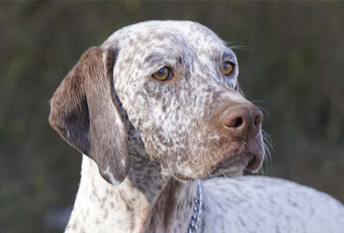Vizslas are very easy to groom. They do not emit a dog odor, which means baths are only required when absolutely necessary. Weekly brushing will keep the coat healthy and shiny, and many owners take this opportunity to use a dry shampoo or to rub the dog down with a damp cloth, to make baths almost unnecessary.
Check the ears on a weekly basis for signs of infection, irritation, or wax build up. Cleanse regularly with a veterinarian-approved cleanser and cotton ball. Brush the teeth at least once per week to prevent tartar buildup and fight gum disease. Additionally, nails should be trimmed once per month if the dog does not wear the toenails down naturally.
You are in for a workout with this breed. The Vizsla is needed daily exercise, which can include walking, running, jogging, and other active activities. In addition to leash walks and games of fetch, most Vizslas need opportunities to run hard off-leash on a regular basis. Mental exercise is as important as physical activity, so training should be part of their routine.
Vizslas can be excellent running or jogging companions, with the caveat that young dogs should not run long distances until they reach maturity at about 18 to 24 months. Older Vizslas typically remain active and playful. This breed is receptive to activity challenges in a variety of environments, which are positive not only for mental and physical growth but also for socialization purposes.
Since the Vizsla is such an active dog, it’s important to make sure you are giving it enough nutrients. This breed does well on a raw diet, as well as on high-grade dog food that lists the first ingredient as meat. Italso does well on chicken or lamb.
Any diet should be appropriate to the dog’s age (puppy, adult, or senior). Most Vizslas are good eaters, and there is considerable variation in individual dogs’ caloric needs; a young, active dog may require four or five cups each day of high-calorie food, while older or less active dogs may need less than half that quantity. Some dogs are prone to gettingoverweight, so watch your dog’s calorie consumption and weight level.
Treatscan be an important aid in training, but giving too many can cause obesity. Learn about whichhuman foodsare safe for dogs, and which are not. Check with your vet if you have any concerns about your dog’s weight or diet.Clean, fresh water should be available at all times.
The average life span of the Vizsla is 11 to 15 years. Breed health concerns may includeallergies, ectropion, entropion, epilepsy, hip dysplasia,hypothyroidism, immune-mediated thrombocytopenia,cataracts,progressive retinal atrophy, sebaceous adenitis andvon Willebrand disease.
Because the Vizsla is so smart, it can be easily trained. It can be taught to retrieve and point easily, as well as obedience, survival skills, toilet-training, socialization with humans and other animals without any problems.
You should start to train your pupwhile it is still young. Use rewards, regular feeding and walking sessions as motivation. Always take your dogoutside after it eats or drinks a lot of water. You will find that the Vizsla loves pleasing people and will take great pains to follow your commands.












